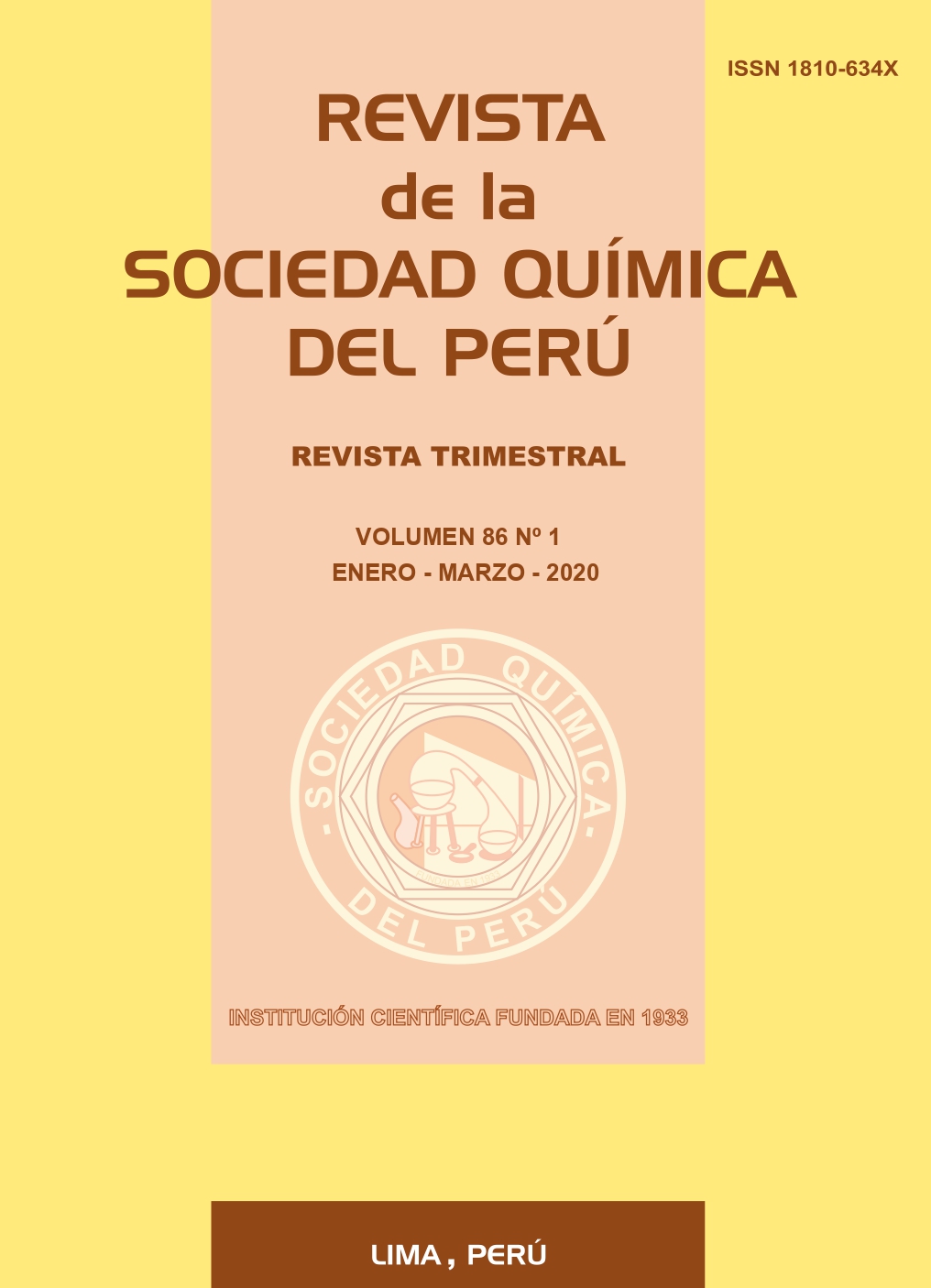SEARCH FOR BIOMARKERS FOR THE DISCRIMINATION OF THE “CHILLIWA” AND “RAMIS” VARIETIES OF KAÑIWA TROUGH NON-TARGETED METABOLOMICS
Abstract
“Kañiwa" (Chenopodium pallidicaule Aellen) is a very nutritious Andean grain characterized by its high protein content and good amino acid profile. The diversity of this species has been characterized by agro-morphological and genomic studies, which are not completely efficient to discriminate between accessions and varieties. Metabolomics is currently used as an additional tool for species delimitation. In this sense, in the present work a nontargeted metabolomic analysis of two varieties of kañiwa (“Ramis” and “Chilliwa”) from the department of Puno, Peru was carried out. For the analysis, ultra-high performance liquid chromatography coupled to high resolution mass spectrometry with Orbitrap analyzer (UHPLC-HRMS) was used. The MSDIAL and MSFINDER software were used to identify the metabolites. The chemical profiles obtained were summarized in a single table for statistical analysis with the SIMCA P software. The OPLS-DA statistical model allowed the classification of both varieties of kañiwa and the S-plot graph showed the main putative biomarkers for discrimination of both varieties. The metabolite delfinidine-O-(6''-O-α- ramnopyranosyl-β-glucopyranoside) was identified as one of the main biomarkers for kañiwa “Ramis”.
Downloads
Copyright (c) 2020 Sociedad Química del Perú

This work is licensed under a Creative Commons Attribution 4.0 International License.
Revista Arbitrada
Derechos reservados: Prohibido el uso total o parcial del material de esta revista sin indicar la fuente de origen.
Nota: Las referencias comerciales que aparecen en los trabajos no constituyen una recomendación de la
Sociedad Química del Perú










